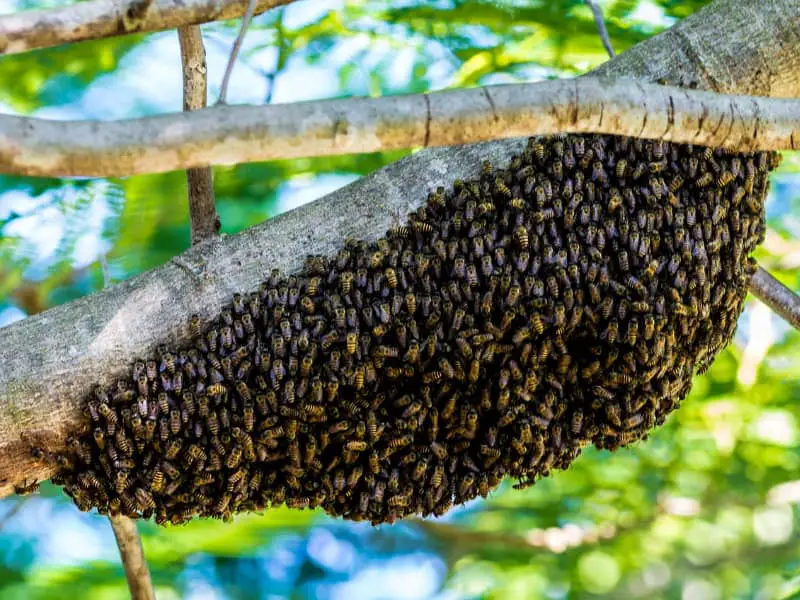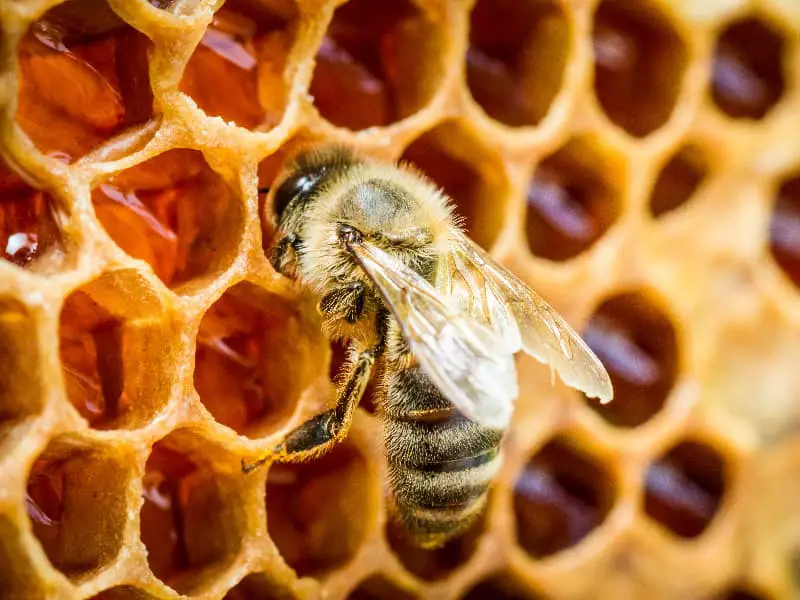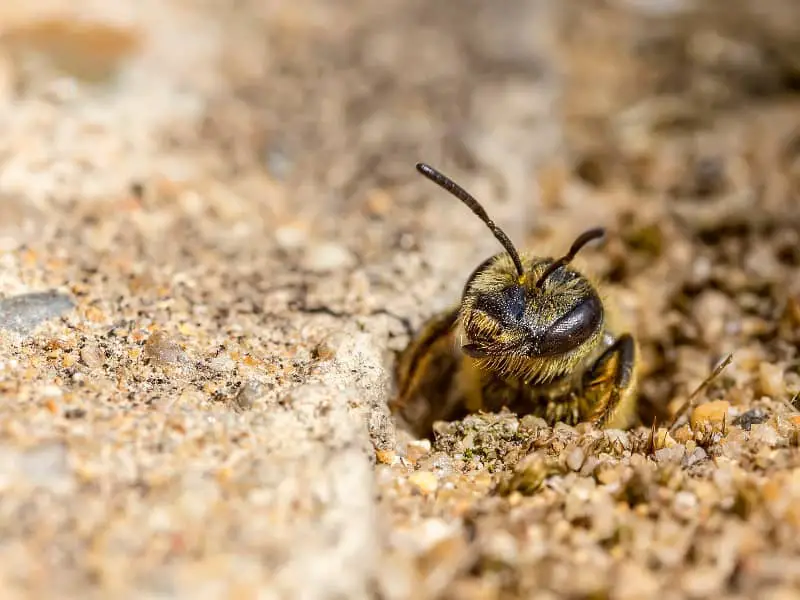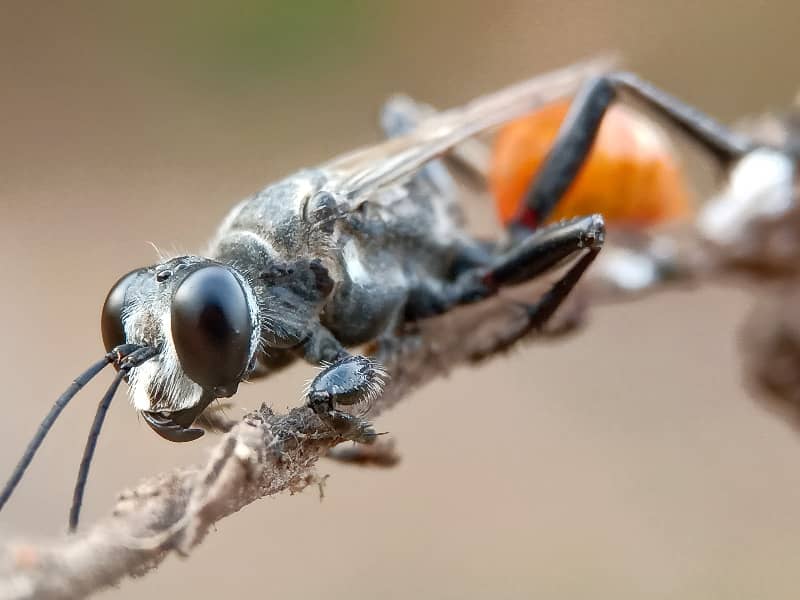
Red mason bee
When you walk through your garden or take a stroll in the great outdoors, you often come across fascinating creatures that you may not have noticed before. The red mason bee is one of these wonders. It may be small, but it plays an important role in our ecosystem and has many interesting characteristics. Let's delve deeper into the world of this special bee.
What is the red mason bee?
The red mason bee, scientifically known as the Osmia bicornis belongs to the Megachilidae family and is one of many species of wild bees. Unlike honey bees, red mason bees do not live in large colonies. They are so-called solitary bees, which means that each Bee lives for itself and not in a communal nest.
The body of this bee is, as the name suggests, reddish-brown. It is about 8-12 mm in size and has a hairy surface that helps it to collect pollen efficiently. If you look carefully, you will also notice its distinctive black antennae.
Why are red mason bees important for the environment?
Although they are not as well known as honey bees, red mason bees are excellent pollinators. Thanks to their size and the way they visit flowers, they can effectively transport pollen from one flower to the next. This promotes biodiversity and helps plants to produce fruit and seeds.
Furthermore, as they do not live in large colonies, red mason bees are less susceptible to diseases and parasites that could wipe out entire colonies. Their existence contributes to the stability of the ecosystem and ensures that many plants are pollinated.
How do red mason bees live?
As mentioned, red mason bees are solitary bees. This means that they do not build hives, as is known from honey bees. Instead, they lay their eggs in existing holes or cracks in wood, masonry or the ground.
After a red mason bee has found a suitable place, it deposits a supply of pollen and nectar for the growing larval stage. It then lays an egg on top and seals the entrance. In this way, a separate "room" is created for each egg. The larvae eat the supply, pupate and then hatch as fully developed bees.
What challenges does the red mason bee face?
Unfortunately, like many other insects, red mason bees are endangered by human activities. Habitat loss, pesticides and climate change can affect their populations.
A major problem is the lack of suitable nesting sites. Urbanization and modern building practices are eliminating many of these bees' natural nesting sites. Without places to nest, they cannot reproduce and their population may decline.
How can you support red mason bees?
There are many simple measures you can take to help these little helpers. One option is to set up special "bee hotels" in your garden or on your balcony. These provide the bees with suitable nesting places.
Furthermore, avoiding pesticides in your garden or on your balcony can help. Instead, you can use natural pest control methods. It is also helpful to grow a variety of flowering plants to provide enough food for the bees.
What do red mason bees eat?
The main food of the red mason bee consists of pollen and nectar. Pollen provides the necessary protein requirements, while nectar is a source of energy in the form of sugar. If you observe these bees, you will often find them at various flowers, busily collecting pollen and drinking nectar. This feeding style makes them efficient pollinators as they transfer pollen grains from flower to flower as they visit.
How do you recognize the difference between red mason bees and other bee species?
Red mason bees have a characteristic reddish-brown exterior, which gives them their name. But there are also other features by which they can be recognized. Their size varies between 8 and 12 mm, and unlike many other bee species, they do not have a striped coloration. Another distinctive feature is their hairy surface, especially on their abdomen, which helps them to collect pollen efficiently.
Also, as they are solitary bees, they are usually found alone and not in groups or swarms as can be the case with some other bee species.
Reproduction and life cycle of the red mason bee
The life cycle of this bee begins with the laying of eggs in a suitable nest. After the egg has been laid, the mother bee seals the nest. In this safe space, the larva grows and feeds on the food supply left by the mother.
Over time, the larva goes through several stages of development until it finally pupates. After the pupation phase, the young bee hatches and begins its adult life. It is fascinating to observe how these bees grow from eggs to larvae, from larvae to pupae and finally to adults.
Interactions with other animals
The red mason bee, like all animals, has interactions with other creatures. Some of these interactions are symbiotic, while others are more parasitic in nature.
There are certain species of flies and other bees that act as parasites. They lay their eggs in the nests of the red mason bee. When these eggs hatch, the larvae feed on the food supply that the mason bee has left for its own offspring. This can of course have a negative impact on the mason bee.
Mason bees are also a potential food source for some birds. However, their reddish color provides a certain amount of camouflage, especially when they are in ground areas or on certain plants.
But not all interactions are negative. Many plants rely on the pollination skills of the red mason bee. Both the plants and the bees benefit from this reciprocal relationship.
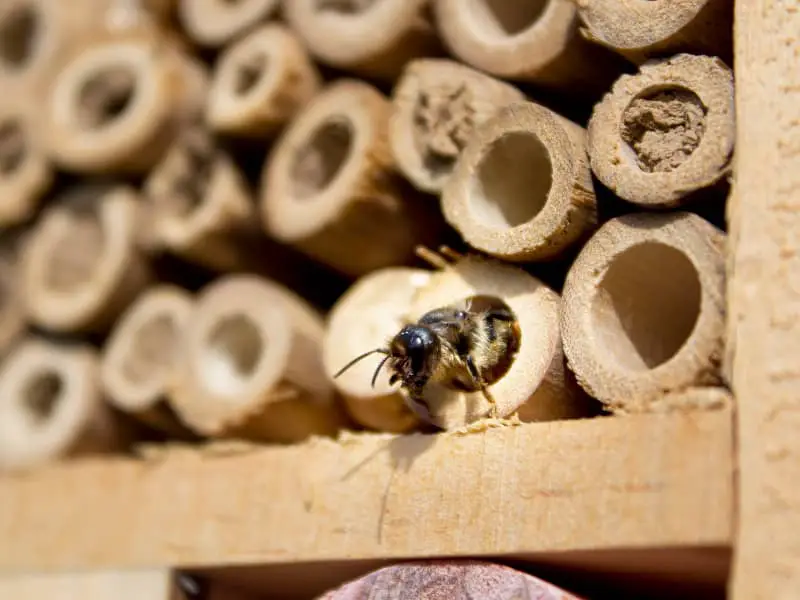
Myths and misunderstandings about the red mason bee
With so many different bee species in the world, it's not surprising that there are many misconceptions and myths, especially when it comes to solitary bees like the red mason bee.
A common myth is that all Bees sting and dangerous. In reality, red mason bees are very peaceful creatures. They are not aggressive and tend to avoid humans. If they sting at all, it is usually in self-defense and not nearly as painful as a honeybee sting.
Another myth is that all bees produce honey. However, the red mason bee is a wild bee and does not produce honey. Their main task is pollination and not honey production.
Dangers and threats to the red mason bee
Unfortunately, like many other insect species, red mason bees are endangered by various factors. Some of these threats are natural, such as predators or parasites. Others, however, are man-made.
The intensive use of pesticides in agriculture can be fatal for these bees. Pesticides can impair their orientation skills, making it difficult for them to find food or return to their nests.
Another important factor is the loss of habitats. As already mentioned, red mason bees need suitable nesting sites. Due to urbanization and agriculture, many of these places are being lost. A suitable habitat is not only a place to nest, but also an area with a variety of flowering plants that provide nectar and pollen.
Measures to protect the red mason bee
Fortunately, there are many measures that everyone can take to help the red mason bees. Planting bee-friendly plants in gardens and on balconies is a start. This provides food for the bees and can help promote pollination in the area.
Setting up bee hotels is also an effective method. These provide nesting sites for bees and protect them from predators and the elements. There are many different types of bee hotels that can be easily purchased at home or in stores.
Another important step is to reduce or eliminate the use of pesticides. There are many natural alternatives for pest control that are less harmful to bees and other pollinators.
Conclusion: Why you should love the red mason bee
The red mason bee is an amazing creature that is often overlooked. Despite its small size, it plays an important role in our ecosystem. Their excellent pollination skills contribute to biodiversity and the production of fruits and seeds, which are essential for many living creatures, including us humans.
By learning how to support and protect them, we are contributing to the health of our planet and doing something good for future generations.
No products found.
Author

-
Garden animal - A life with nature
Welcome to my animal blog! My name is Dirk and I am happy to take you on my journey through the fascinating world of animals and gardening.
Born 54 years ago, I have had an insatiable curiosity for the animal world around me since childhood. Although I have moved professionally in other industries, my true passion has always been animals and nature. It is remarkable how a small garden has become such an important part of my life.
Many of my fondest memories are associated with the animals that share our home. Whether it's the curious squirrels that scurry across the trees in the morning, the colorful variety of birds that visit our feeders, or the busy bees and butterflies that pollinate our flowers, every moment with them is invaluable to me.
This blog is my contribution to share my experiences, discoveries and insights with like-minded people. Here I will share stories of unforgettable encounters with animals, give tips on gardening and creating wildlife-friendly habitats, and take you on my journeys through nature.
Thank you so much for being here!
Cordial,
Dirk aka garden animal
Last posts
- 27. February 2024PetsVeganes Hundefutter – Grün und Gesund?
- 18. January 2024ChickensOregano für Hühner
- November 27, 2023HamsterDiurnal hamsters
- November 24, 2023HamsterHamster hammock
Letzte Aktualisierung am 2025-12-31 / Affiliate Links / Bilder von der Amazon Product Advertising API

